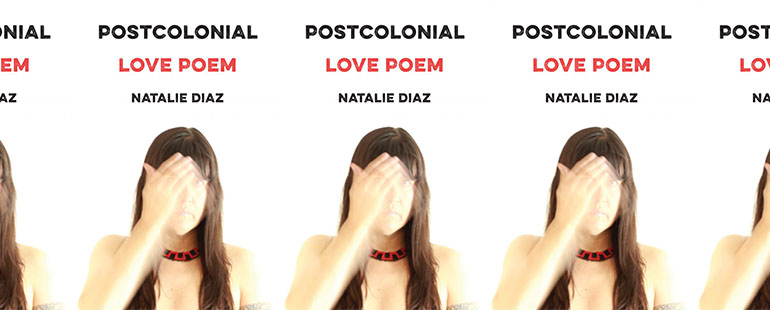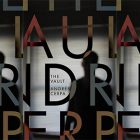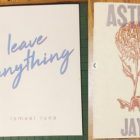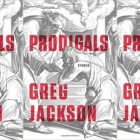Postcolonial Love Poem by Natalie Diaz

Postcolonial Love Poem
Natalie Diaz
Graywolf Press | March 3, 2020
Situating the poems of her new collection amidst voices of postcolonial love from Sor Juana Inés de la Cruz to Rihanna—and saturating her lines with allusions to writers as varied as Homer, Jorge Luis Borges, and John Ashbery—Natalie Diaz makes no pretense that Postcolonial Love Poem is anything but a major work of American literature. “I am your Native,” writes Diaz, “and this is my American labyrinth.”
In her new collection, Diaz, who is Mojave and an enrolled member of the Gila River Indian Tribe, crafts a withering critique of conditions faced by Native peoples past and present (I’ve used “Native” and “Indian” interchangeably throughout this review in accordance with Diaz’s usage in her collection). In “They Don’t Love You Like I Love You,” Diaz writes:
What is the United States if not a clot
of clouds? If not spilled milk? Or blood?
If not the place we once were
in the millions? America is Maps—Maps are ghosts: white and
layered with people and places I see through.
With images that entwine the histories of American whiteness and American violence—the “spilled milk,” the “clot of clouds”—Diaz offers a palimpsestic vision of the United States as a place where settlers “live on top of those of ours who don’t.” This is not simply another version of Faulkner’s oft-quoted maxim that “the past is never dead,” however, but a powerful exposure of the “logic of elimination” that Patrick Wolfe identifies at the center of settler colonialism itself: “Settler colonialism destroys to replace.”
On one level, Diaz’s invocation of maps and their “layers” emphasizes the evidence of such eliminatory pursuits: think, for example, of the countless “American” places that adorn themselves with “Indian” names while simultaneously denying Native sovereignty claims. On another level, however, Diaz’s maps expose the mechanisms by which such pursuits are often carried out. At its core, Wolfe writes, what settler colonialism wants is land—and lines drawn and redrawn on U.S. government maps have committed “legal” massacres on larger scales, though by different means, than Forsyth’s 7th Cavalry. On both levels, Diaz’s response is equally defiant, reminding her readers that “I see through” such fictions and “ghosts.”
Postcolonial Love Poem is also a prescient ecological jeremiad that links the genocidal impulses of U.S. settler colonialism directly to the visible and immediate emergencies of climate crisis—our “bleached deserts,” “skeletoned river beds,” “dead water.” As Diaz writes in “The First Water Is the Body,” a poem which invokes both the crime of Flint, Michigan and the Native resistance at Standing Rock, North Dakota:
We think of our bodies as being all that we are: I am my body. This thinking helps us disrespect water, air, land, one another. But water is not external from our body, our self…The water we drink, like the air we breathe, is not a part of our body but is our body. What we do to one—to the body, to the water—we do to the other…Do you think the water will forget what we have done, what we continue to do?
The opening lines of the poem insist that it is speaking literally: “This is not metaphor.” As such, these moments offer radical challenge to both the tradition of Cartesian dualism and modes of Western ontology that insist on definition by difference—a constant saying of what I am, or what a thing, is not. Moreover, it is not simply that water is “part of our body” in a biological or physiological sense: poisoned water will harm my body, while lack of it will make me thirsty. Rather, “the water we drink…is our body”—a realization that declares acts of poisoning water, of stealing water, of killing water to be nothing less than acts of absolute self-annihilation. Water will not “forget what we have done” because our bodies—living, suffering, dying—will not forget it either.
Diaz returns to this timely question of water throughout her work—a vision of the Colorado River “shattered by fifteen dams” in “How the Milky Way Was Made,” for example, as well as in a stunning long poem, “exhibits from The American Water Museum,” with lines such as:
The river is my sister—I am its daughter.
It is my hands when I drink from it,
my own eye when I am weeping,
and my desire when I ache like a yucca bell
in the night.
Carefully preserving both its spiritual power and its material being, the poem traces water’s many entanglements with the body and its origins. “Sit or stand silently,” one “exhibit” instructs. “Close your eyes until they are still. / In the stillness breathe in the river moving inside you.” Here, “river” is a verb as well as a noun—and this dual usage of the word as both active feeling and locatable place further clarifies how “my hands” might simultaneously be in the river and be the river. Likewise, Diaz’s ascription of familial relation (sister, mother) and emotional capacity (“my own eye when I am weeping…my desire when I ache”) to the river recuperates the ecological potential of pathetic fallacy while insisting upon the recognition of a fully animate, vibrant, and interconnected world.
With its polyvocal lyric, use of multiple languages, and incorporation of “found” text (both fabricated and authentic), “exhibits from The American Water Museum” showcases Diaz’s range of formal and stylistic innovation. It is by no means, however, the only such display of these considerable talents present in Postcolonial Love Poem. Early in the collection, for example, Diaz begins “American Arithmetic” with a statistic borrowed from a Department of Justice report: “Native Americans make up less than / 1 percent of the population of America.” The poem incorporates similar statistics throughout—and uses this technique of documentary poetics to illustrate how statistical and mathematical logics are often weaponized to depersonalize Native concerns and obscure Native presence.
The penultimate stanza, however, asks readers to consider such “arithmetic” in a different way:
But in an American room of one hundred people,
I am Native American—less than one, less than
whole—I am less than myself. Only a fraction
of a body, let’s say, I am only a hand—
Returning this statistic to its origins in the Native body itself, Diaz’s “American room” parallels her “American labyrinth” in order to dramatize the impossible toll of Native existence when one is always “a fraction,” always “less than whole.” The line breaks of “than / whole” and “fraction / of” combine with the frequent deployment of dash and caesura to further suggest the demands of such imposed fragmentation—and the stanza’s final line highlights, in its chosen “fraction,” one of the most unifying images of the entire collection: I am only a hand—
Time and again, these poems return to hands—hands that love and caress, but also hands that wound and hurt. Often, these are the “moving hands” of a lover. “Where your hands have been,” Diaz writes in the title poem of the collection, “are diamonds / on my shoulders, down my back, thighs—” but their presence is felt in numerous other ways as well.
In “Blood-Light,” for example, it’s the hands of Diaz’s brother—a familiar figure to readers of her debut book, When My Brother Was an Aztec (Copper Canyon Press, 2012)—that mark his initial appearance in this collection: “My brother has a knife in his hand. / He has decided to stab my father.” Later, in “It Was the Animals,” his hands move in gentler ways when he mistakes “the broken end of a picture frame / with a floral design carved into its surface” for a piece of Noah’s ark: “I watched him drag his wrecked fingers / over the chipped flower-work of the wood—” These hands—whether violent or “wrecked”—testify to a similar fact: an inability to be reduced to either stereotype or statistic, a refusal of anything less than recognition of their full humanity.
Hands also play a central role in another of Diaz’s frequent poetic subjects: basketball. Amidst its considerable humor, “Top Ten Reasons Why Indians Are Good At Basketball” (“1. The same reason we are good in bed.”), the poem turns a serious eye toward the sport’s symbolism: “Really, though, all Indians are good at basketball because a basketball has never been just a basketball—it has always been a full moon in this terminal darkness…a fat gourd we sing to.”
In Diaz’s basketball poems, hands, like the ball itself, are transformed into symbols of power and control absent in other areas of everyday Indian life. “We learned to make guns of our hands,” she writes in “Run’n’Gun,” “and we pulled the trigger on jumpers all damn day.” In “The Mustangs,” we join ten-year-old Diaz in “the rattling bleachers of the Needles Mustangs gymnasium,” AC/DC’s “Thunderstruck” blaring in the background, to watch “young kings and conquerors” as “they made layup after layup, passed the ball like a planet between them, pulled it back and forth from the floor to their hands like Mars.”
As they make layups and jumpers, these hands echo Diaz’s own hands and their harnessing of the paradoxical power inherent within the imagined self-effacement of being “only” a hand. Referencing them in “These Hands, If Not Gods,” for example, she asks:
Haven’t they moved like rivers—
like glory, like light—
over the seven days of your body?And wasn’t that good?
Here, hands move in acts of “fervor” and love—they have, the poem reminds its lover, “riveted your wrists” and “had you at your knees.” At the same time, however, when a later line exclaims of these same hands “O, the beautiful making they do,” it is difficult not to imagine—if only for a moment—the poem thinking of its own beauty as well: its own ability to have readers at their knees through its “beautiful making.”
And perhaps the most difficult achievement of Postcolonial Love Poem is its continued faith in so many forms and varieties of love. Diaz’s “Like Church” expands upon the nature of this challenge for any Native writer:
But it’s hard, isn’t it? Not to perform
what they say about our sadness, when we are
always so sad. It is real work to not perform
a fable.
In poem after poem—from “Ode to the Beloved’s Hips” to “From the Desire Field,” one in a series of “letter-poems” exchanged between Diaz and fellow poet Ada Limón—Postcolonial Love Poem does this “real work” with devastating lyricism and defiant survivance.
Nowhere is this more evident than in Diaz’s final poem, “Grief Work,” and its negotiation of its opening question: “Why not now go toward the things I love?” In a series of two-line stanzas thick with color, sweetness, and images of the body, the poem returns again to the lover whose presence defines and elevates so much of the collection. Of all the loves in Postcolonial Love Poem, it seems as though it is, at last, this love—and this lover—that enable the transformation of the speaker’s complex “grief” into something new: “When the eyes and lips are brushed with honey / what is seen and said will never be the same.” Uniting many of Postcolonial Love Poem’s major images, “Grief Work” weaves its way through war, through melancholy, through hips and hands—until it answers its own question in the affirmative: “We go where there is love.” The result is one of elemental metamorphosis and communion. “I do my grief work / with her body—,” Diaz writes, and “we are rivered. / We are rearranged.” This final “rivering” is not a simple answer, not without its own complications, to be sure, but it is certainly an outcome both hard-fought and well-earned by the struggle and need of Postcolonial Love Poem to find love—even in a hopeless place.



